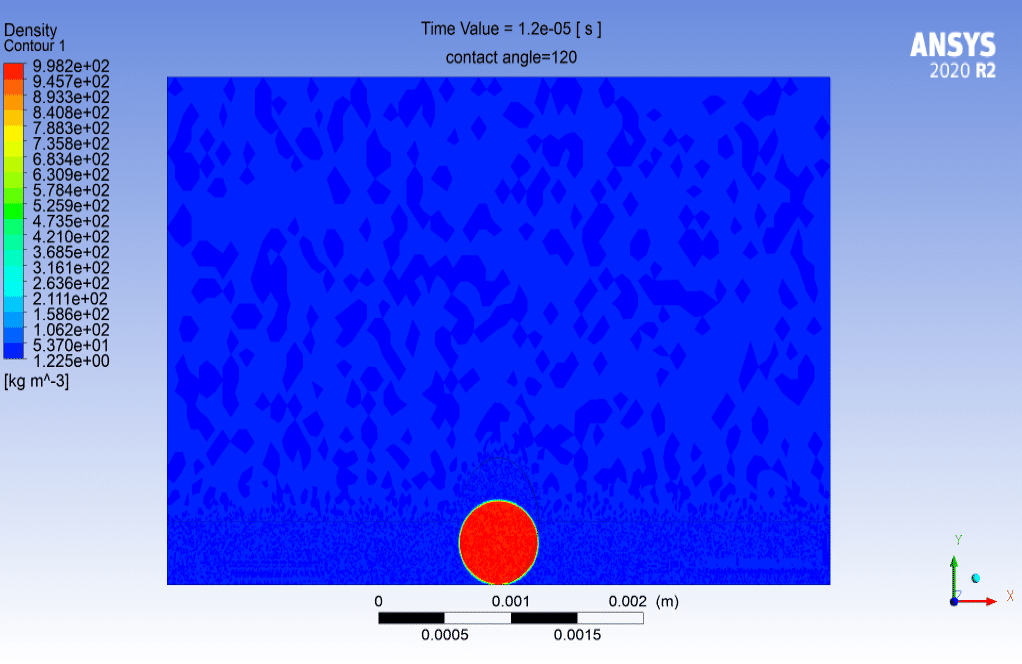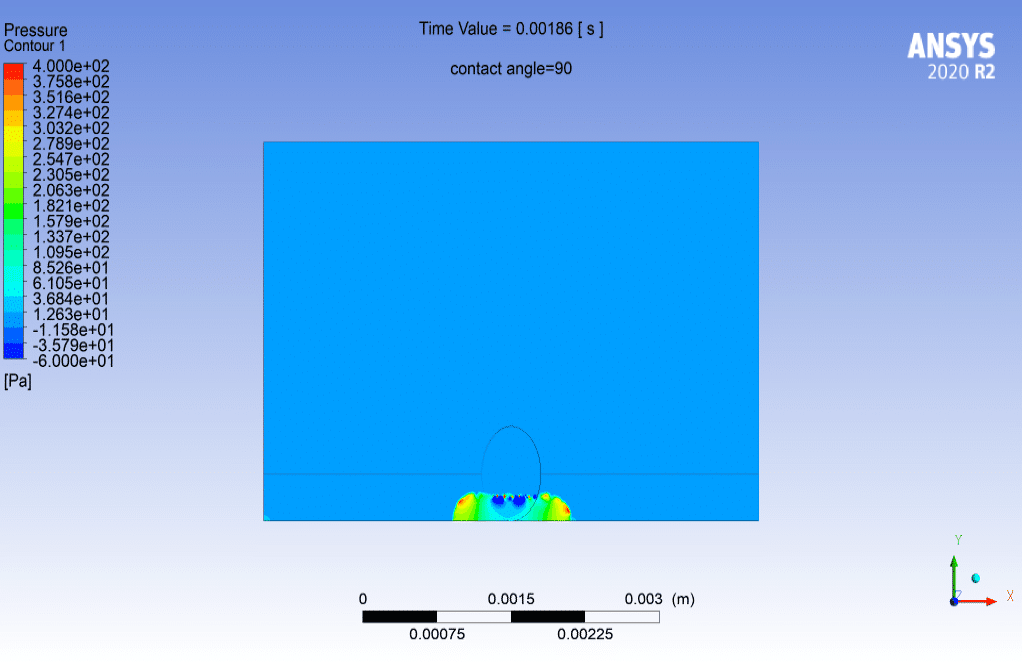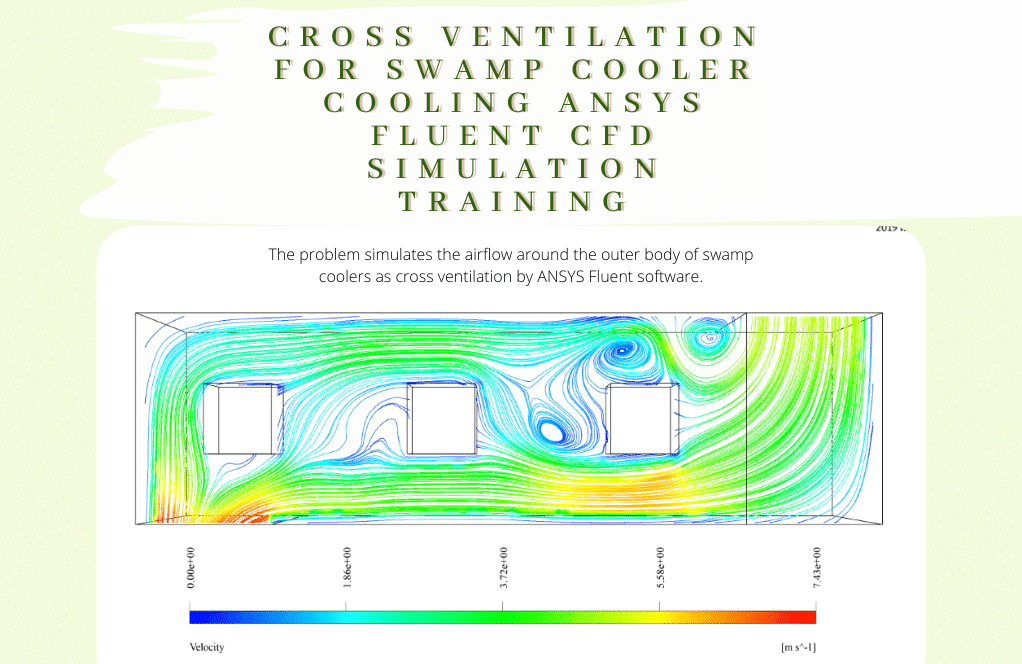Effect of Contact Angle on Droplet Collapse, Ansys Fluent Training
$100.00 $50.00 Student Discount
- The problem numerically simulates the Effect of Contact Angle on Droplet Collapse using ANSYS Fluent software.
- We design the 3-D model by the SpaceClaim software.
- We Mesh the model by ANSYS Meshing software, and the element number equals 53440.
- We perform this simulation as unsteady (Transient).
- We use the VOF Multi-Phase model to water droplets in the air.
To Order Your Project or benefit from a CFD consultation, contact our experts via email (info@mr-cfd.com), online support tab, or WhatsApp at +44 7443 197273.
There are some Free Products to check our service quality.
If you want the training video in another language instead of English, ask it via info@mr-cfd.com after you buy the product.
Description
Description
In this project, the effect of the contact angle on droplet collapse has been simulated, and the results have been investigated using ANSYS Fluent software. We perform this CFD project and investigate it by CFD analysis.
The present model is designed in three dimensions using the SpaceClaim software. The length of the computational area is 5 mm, and its height is 3.5 mm.
This geometry is meshed in Ansys meshing software, and the total number of cells is 53440.
Also, due to the nature of the present problem, the transient solver has been used.
Droplet Methodology
In this project, a numerical simulation of droplet collapse with two different contact angles has been done using Ansys Fluent software.
The VOF model has been used to simulate and solve the two-phase flow field equations. This project investigates the collapse of water droplets on the wall at contact angles of 90 degrees and 120 degrees.
Moreover, the laminar viscous model is used to solve the fluid equations.
Droplet Conclusion
At the end of the solution process, two-dimensional contours related to water volume fraction, velocity, and pressure are obtained. This simulation investigates the behavior of water droplets in the two modes of contact angles of 90 and 120 degrees.
According to the animation, it is clear that when the contact angle is 120 degrees, the water drop has more resistance to the momentary turbulence created, But we see more scatter in the 90-degree angle mode. This phenomenon can be important when more drops are on the wall next to each other.











Edgar Carroll –
I’m fascinated by the effect of contact angle on droplet behavior. Can you elaborate on how the results of the 90 and 120-degree contact angles compare in terms of their impact on droplet spread and collapse dynamics?
MR CFD Support –
Certainly! Generally, a higher contact angle, like 120 degrees in this case, typically suggests a lower wettability and thus a droplet that is more resistant to spreading out on the surface. This can lead to a more spherical droplet shape upon impact. Conversely, a contact angle of 90 degrees indicates a neutral wettability, where the droplet may spread more upon impact and experience a higher degree of deformation and break-up. Therefore, in summary, you should expect to see the droplet with a 120-degree contact angle maintain a more compact form, while the droplet with a 90-degree contact angle spreads more before collapsing.
Dr. Cameron Rodriguez IV –
The visual representations and animations in this droplet collapse simulation perfectly showcased how different contact angles can affect a droplet’s behavior. The nuanced differences between the 90 and 120-degree angles were fascinating and pointed out important practical applications. Great job on a thorough and enlightening analysis!
MR CFD Support –
Thank you for your positive feedback! We are delighted to know that our CFD simulation and its visualization components effectively conveyed the impact of contact angles on droplet behavior. Your observations are appreciated, and it’s great to hear that the details in the project’s analysis were valuable to you. If you have any further inquiries or need more insights, we are here to support your understanding of such fluid dynamic phenomena!
Suzanne Cormier –
The materials provided were excellent and truly comprehensive. I am greatly impressed by how the effect of contact angle on droplet behavior was illustrated clearly and what practical implications can be drawn from such finely detailed simulations. Thank you for such a remarkable learning resource!
MR CFD Support –
Thank you for your kind words. We are thrilled to hear that you found our materials on the effect of contact angle on droplet collapse clear and beneficial. We aim to provide comprehensive learning resources that can have practical implications for our users. Your feedback is greatly appreciated!
Laila Schaden –
This product was impressive in its detailed analysis of droplet behavior. The comparative approach between different contact angles provided valuable insights. Well-done to the team for the clear and informative conclusions in the results section.
MR CFD Support –
Thank you for your kind words and positive feedback! We’re thrilled to hear you found the analysis informative and useful. Your appreciation really motivates our team to keep providing high-quality CFD training. If you have any more questions or need further assistance, please don’t hesitate to ask.
Maurice Russel –
The visuals in the simulation results were truly fascinating! The animations provided an excellent demonstration of droplet behavior under varying angles.
MR CFD Support –
Thank you for your positive feedback! We’re ecstatic to hear that our simulation and its visual representations were able to effectively demonstrate the complex dynamics of droplet behavior for you. Understanding the influence of contact angles on such processes is indeed pivotal, and we’re glad you appreciated the detail in our work.
Winifred Carter II –
This training has been invaluable in improving my understanding of droplet behavior in different conditions. I’m impressed with the clarity of the simulations at both 90 and 120 degrees.
MR CFD Support –
We’re thrilled to hear that the training on the effect of contact angle on droplet collapse exceeded your expectations and provided you with clear insights. Thank you for your positive feedback!
Christopher Hills II –
This training helped me understand the droplet behavior hugely. The visualization of contact angles is enlightening, showing how each angle uniquely affects the droplet collapse. Splendid educational content!
MR CFD Support –
Thank you for your positive feedback! We’re delighted to hear that our training materials have enhanced your understanding of droplet behavior and the impact of contact angles. We strive to provide clear and informative content, so it’s rewarding to know when it has aided someone’s learning.
Colin Emmerich –
The training was insightful, especially when comparing collapse behaviors at different contact angles. It clearly showed the dynamics involved in droplet interactions with surfaces.
MR CFD Support –
Thank you for your review. We’re glad you found the training on droplet collapse and contact angle effects using Ansys Fluent helpful and insightful!
Leora McLaughlin –
Just wanted to say the detailed analysis of how contact angles affects droplet behavior was both enlightening and practical. Will definitely come in handy for my coating process optimization project!
MR CFD Support –
Thank you for your positive feedback on our project regarding the effect of contact angle on droplet collapse. We’re pleased to know you found the analysis enlightening and practical for your work. If you have any more questions or need further assistance with your project, remember that we’re here to help!
Dr. Paxton Barton –
The explanation and animation of the behavior of the water droplets is incredibly insightful. It clearly demonstrates how the contact angle can affect a droplet’s response to turbulence – something crucial for detailed surface interaction studies.
MR CFD Support –
Thank you for your positive feedback! We’re glad you found the demonstration helpful and could gain insight into the complex interactions between the water droplets and the surface. It is our aim to provide valuable and detailed analyses on our platform.
Prof. Clara Armstrong –
Fantastic product! Watching the droplet behavior at different contact angles was intriguing, especially the difference in resistance against turbulence. Impressive visualization of the process.
MR CFD Support –
We appreciate your positive feedback! It’s always rewarding to hear how our simulations can captivate and educate our customers. Thank you for choosing our learning materials.
Liza Hill –
The training was very insightful for understanding how contact angle affects droplet behavior. The visualizations were particularly helpful in comparing the resistance to turbulence between the 90 and 120 degree angles. Good work!
MR CFD Support –
Thank you for your positive feedback! We’re glad that our training could provide you with a clear understanding and visualization of droplet behavior under different contact angles. It’s great to know that you found the comparative analysis useful. If you need further assistance or more educational materials, please don’t hesitate to ask.
Mac Funk –
The simulations sound fascinating! The control over contact angles and the comparison between 90 and 120 degrees offer meaningful insights into fluid behavior. Watching the behavior of the droplet during collapse for different angles showcases the impact of surface interactions on fluid dynamics. Excellent application of CFD techniques!
MR CFD Support –
Thank you for your positive feedback! It’s great to hear that you found the simulation to be an excellent application of CFD techniques and that the insights into fluid behavior due to varying contact angles were fascinating and meaningful to you. We’re always here to provide useful and insightful simulation studies. If you have any further comments or need assistance with your own simulations, please reach out. We cont nues.
Eliza Haley –
Can we also observe the effect on thermal properties if it was integrated, or is the focus entirely on mechanical properties with the contact angles?
MR CFD Support –
In this simulation, the focus is purely on the mechanical behavior, particularly the impact of different contact angles on droplet collapse, without integrating thermal properties. If thermal effects are to be included, additional setup and analysis would be required to account for heat transfer and possible phase change.
Miss Maia Nienow DDS –
Absolutely thrilled with the breakdown of the droplet collapse simulation specifically focusing on contact angles using ANSYS Fluent. Seeing how changes in the contact angle influence droplet behavior is incredibly useful for understanding the surface-droplet interactions in my field of interest.
MR CFD Support –
Thank you so much for your kind review! We’re delighted to hear that our simulation on the effect of contact angles on droplet collapse has been beneficial for your research. It’s great to see our training materials helping customers in practical applications. If you need any further assistance or information, don’t hesitate to reach out to us.
Al Koch –
This training helped me understand the influence of contact angles on droplet behavior. The visualizations were especially helpful
MR CFD Support –
Thank you for sharing your positive experience with our training on the effect of contact angles on droplet collapse. We’re glad that the visualizations aided your understanding and we’re always here to provide insights into fluid dynamics!